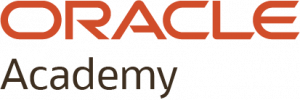 In the next decade, job seekers in manufacturing will find plenty of openings. It’s projected that nearly 3.5 million manufacturing jobs will need to be filled in the next 10 years. The challenge, however, is that there aren’t enough qualified workers to fill the positions. An aging workforce, changing technologies, and misperceptions about the industry all contribute to the shortage. This has serious consequences for the manufacturing industry, which is overwhelmingly not prepared. In fact, nearly nine out of 10 manufacturers say that their company is having problems finding skilled workers in manufacturing.
In the next decade, job seekers in manufacturing will find plenty of openings. It’s projected that nearly 3.5 million manufacturing jobs will need to be filled in the next 10 years. The challenge, however, is that there aren’t enough qualified workers to fill the positions. An aging workforce, changing technologies, and misperceptions about the industry all contribute to the shortage. This has serious consequences for the manufacturing industry, which is overwhelmingly not prepared. In fact, nearly nine out of 10 manufacturers say that their company is having problems finding skilled workers in manufacturing.
When it comes to filling this pipeline of manufacturing talent, state Career Technical Education (CTE) leaders play an essential role in developing the next generation.
It is important for industry and education to partner together to bring industry-relevant knowledge and skills to the classroom. Aside from learners, manufacturers are the most important customers of CTE programs, and programs should be aligned with the skills manufacturers need and want.
It’s critical to embed manufacturers into the education process to ensure the curriculum and equipment aligns with their needs, asking questions such as: What is the market need? Which positions need to be filled? Which machines are you using? Which skills do you require? Which type of training programs do you use? Which certifications do you need?
Matching your state’s programs to local industry needs will ensure well-trained learners from your schools are in demand. Moreover, it can also lead to other opportunities like on-site tours, mentoring, equipment donations, internships, jobs, and even funding.
Organizations like the SME Education Foundation can be valuable partners in such a process. The Foundation’s SME PRIME® program is predicated on partnering private industry with academia to build transformational hands-on manufacturing education experiences. Informed by private industry, SME PRIME builds customized manufacturing and engineering programs in high schools across the country, providing equipment, curriculum, professional development, scholarships and STEM-focused extra-curricular activities to learners and teachers.
Last year, the SME Education Foundation partnered with the Michigan Department of Education to introduce SME PRIME to 16 high schools across the state, engaging 150 manufacturers in the process. Nationwide, SME PRIME® provides manufacturing and engineering education to more than 81 schools in 22 states, and 89 percent of graduates pursue manufacturing post-graduation. To learn more about SME PRIME®, click here.
The bottom line is that by working together, manufacturers and CTE leaders can move forward together and create limitless opportunities for a generation of learners.
Rob Luce, Vice President SME Education Foundation, SME


 By nature, educators are deeply attuned to the needs of their learners—and often even the needs of their families. But these days, many educators are navigating how to respond to the often-increased needs and greater numbers of crises within (and sometimes outside of) their classroom ecosystems. Where is the game plan for—as we are frequently reminded—these unprecedented times?
By nature, educators are deeply attuned to the needs of their learners—and often even the needs of their families. But these days, many educators are navigating how to respond to the often-increased needs and greater numbers of crises within (and sometimes outside of) their classroom ecosystems. Where is the game plan for—as we are frequently reminded—these unprecedented times? Holly Atha,
Holly Atha,  As Oracle’s global philanthropic educational program, Oracle Academy is open to educators around the world to advance technology education, skills, innovation, diversity and inclusion. We offer academic institutions and their educators free teaching and learning resources ― including curriculum, cloud, software, and educator professional development ― that help prepare millions of students with hands-on practice and career-relevant skills.
As Oracle’s global philanthropic educational program, Oracle Academy is open to educators around the world to advance technology education, skills, innovation, diversity and inclusion. We offer academic institutions and their educators free teaching and learning resources ― including curriculum, cloud, software, and educator professional development ― that help prepare millions of students with hands-on practice and career-relevant skills.

 We offer several resources to support state CTE leaders in leveraging CTE programs to develop learner experiences and pathways in energy careers. . In addition, some states have a specific energy Career Cluster devoted to preparation for this sector. CTE also provides opportunities to earn stackable certificates, industry-recognized credentials, and degrees as outlined by the Center for Energy Workforce Development’s
We offer several resources to support state CTE leaders in leveraging CTE programs to develop learner experiences and pathways in energy careers. . In addition, some states have a specific energy Career Cluster devoted to preparation for this sector. CTE also provides opportunities to earn stackable certificates, industry-recognized credentials, and degrees as outlined by the Center for Energy Workforce Development’s